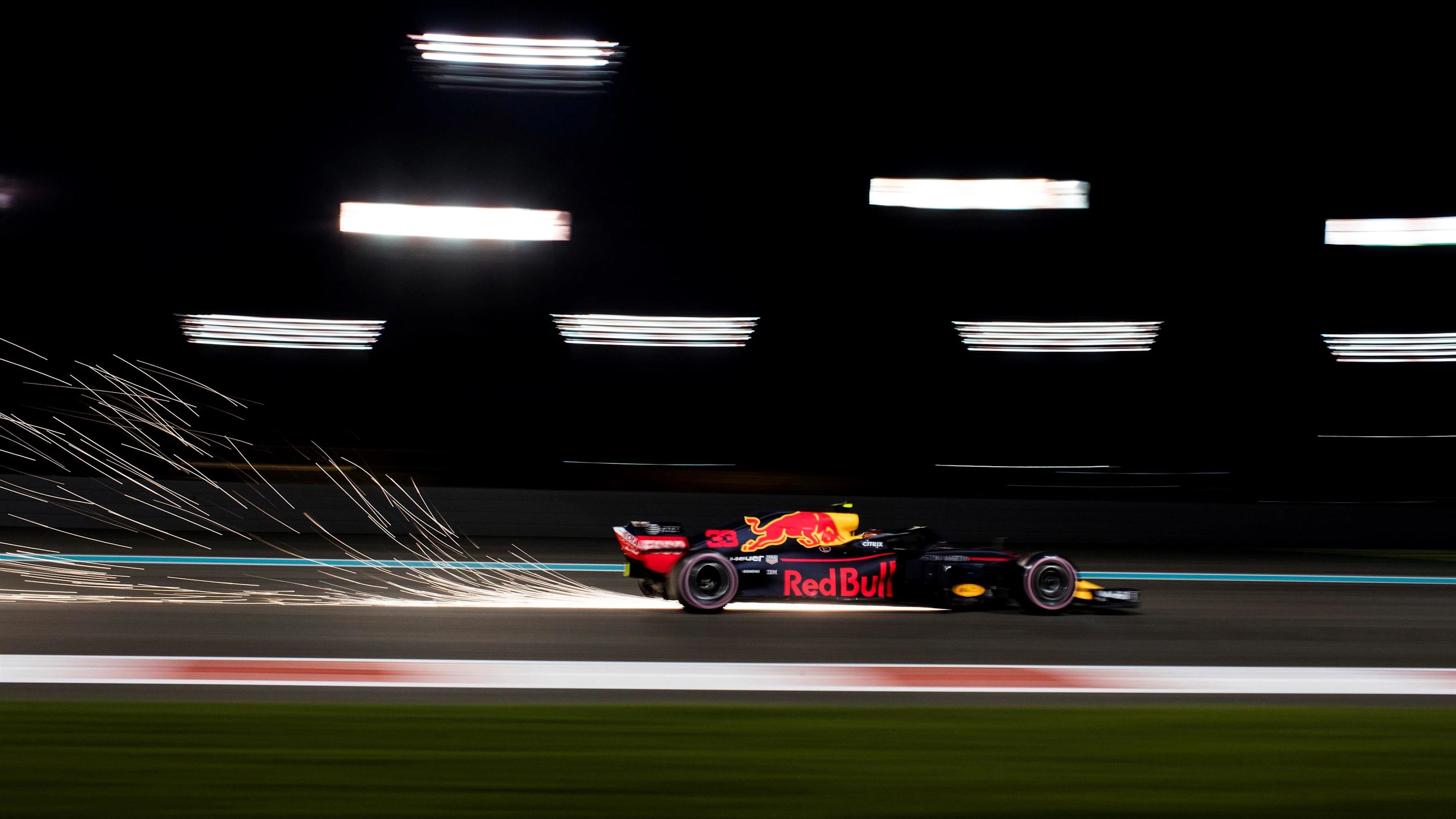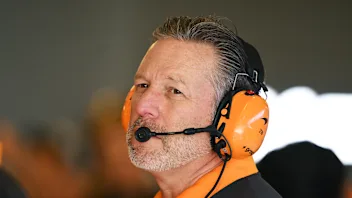
A new F1 season means a new set of fans ready to immerse themselves in the technicolour, sensory overload-y glory that is Formula 1 (we’re biased, we know). But with F1 being the technical, jargon-laden sport that it is, it can sometimes be hard for a newbie to work out what the hell the drivers, team bosses and commentators are talking about half the time. So to help new fans get themselves up to speed, we decided to produce a guide to some of the most commonly used pieces of F1 slang, and what they mean – and here it is!
UNDERCUT
What is it: When a driver, struggling to get past another car, pits early in a bid to get a performance advantage from fresh tyres that will hopefully put them ahead when their rival then pits.
Use it in a sentence: “He’s going to try to use the undercut to get ahead”
Not to be confused with: A haircut popular with hipsters the world over.
MARBLES
What are they: Small pieces of rubber that are shredded from the tyres during cornering, which build up off the racing line. Running onto them mid-race can be treacherous as they prevent the tyre making proper contact with the road, thereby reducing grip. Driving over them after the chequered flag, however, is a nifty tactic the drivers use to try and make sure their cars aren’t underweight at the race end.
Use it in a sentence: “I got onto the marbles in the hairpin, went a bit wide and got the tyres dirty”
Not to be confused with: Lots of small glass balls on the track. That would be dangerous.
READ MORE: Our beginner’s guide to F1 cliches
DIRTY AIR/CLEAN AIR
What is it: ‘Dirty air’ is created by the odd vortices of air spinning off the back of a leading car and reducing the efficient airflow over the wings of the following one, giving it a performance disadvantage by reducing downforce. Clean air is when a car is out on its own, with a nice, undisturbed airflow passing over its wings, providing good downforce.
Use it in a sentence: “I tried to get past but I was stuck in his dirty air. But once he pitted and I got some clean air, I could start to put in some decent laps”
Not to be confused with: A gastric problem.
BOTTOMING
What is it: Quite simply, it’s when the underside of the car hits the track. It’s usually caused by bumps in the track or a sudden rise or crest, à la Eau Rouge. The act of bottoming was made more spectacular, if you’ll pardon the expression, by the introduction of titanium skid blocks in 2015, which throw off a shower of sparks when the cars’ undersides hit the deck.
Use it in a sentence: “The car had a good balance, although on my qualifying lap, it was bottoming and I lost some time”
Not to be confused with: Anything involving the gluteus maximus.

BLISTERING/GRAINING
What is it: Blistering is when the temperature imbalance between a tyre’s hot carcass (the inner bit) and cold surface (the outer bit) cause pieces of rubber to explode out of the tyre, leaving a hole. Graining is when the tyre’s carcass is cold and surface is hot, with the resulting flex in the tyre causing the rubber to chunk off and stick to the surface of the tyre, reducing grip.
Use it in a sentence: “We were struggling a little more than Ferrari with the tyre blistering”/ "I had a lot of graining on my tyres because we went out on the soft in very cold conditions and they lost temperature”
Not to be confused with: Something that requires a verruca sock in the case of blistering, or something to do with trees in the case of graining.
READ MORE: 5 storylines that could define F1 in the ‘20s
OUTPERFORMING THE CAR
What is it: When a driver’s talent manages to overcome the limitations of a car that is far from the class of the field. Fernando Alonso has been a prime example over much of the last decade, but other famous ones include Ayrton Senna’s performance for Toleman at Monaco in 1984 and Sebastian Vettel’s win for Toro Rosso at Monza in 2008.
Use it in a sentence: “Fernando Alonso outperformed his car to qualify third”
Not to be confused with: Running faster than an F1 car. That doesn’t work.
BACKMARKER
What is it: Those drivers circulating at the back of the F1 field, who are often liable to be lapped by the leading cars.
Use it in a sentence: “That backmarker blocked me and completely ruined my race”
Not to be confused with: A lower back tattoo.

POLESITTER
What is it: The driver who claims pole position during qualifying for the race.
Use it in a sentence: “Polesitter Lewis Hamilton got away cleanly to hold the lead into the first corner”
Not to be confused with: A form of medieval torture involving sharpened sticks.
FALLING OFF THE CLIFF
What is it: Heard more often a few years ago when tyre compounds tended to degrade rapidly, ‘falling off the cliff’ was the moment where the tyres’ performance dropped sharply away during a race, rendering them uncompetitive.
Use it in a sentence: “In the second stint my tyres fell off a cliff and I was forced to pit earlier than planned”
Not to be confused with: Anything to do with lemmings.
FLATSPOT
What is it: When the driver locks his front brakes, causing one or both front tyres to stop rotating, meaning they slide longitudinally along the track as opposed to rolling along it, planing a flat surface onto the tyre.
Use it in a sentence: “Unfortunately I had to pit after I got a flatspot, which took away any chance I had of getting on the podium”
Not to be confused with: An unsightly facial blemish.

LIFT AND COAST
What is it: If a driver is looking like they’re burning too much fuel to get to the end of a race, their engineer might tell them to ‘lift and coast’, meaning that the driver lifts off the throttle and cruises into a braking zone, which uses less fuel – although it obviously slows down their pace.
Use it in a sentence: “I had to lift and coast if I wanted to save fuel and make it to the end”
Not to be confused with: An elevator at the beach.
BRAKE BIAS
What is it: When a driver mashes the brake pedal, all four brakes act to slow the car down – but the driver can shift how effective the front brakes are compared to the rears by changing the brake bias. In the wet, a driver will usually shift the brake bias more to the rear to stop the front brakes from locking, while drivers will also change the brake bias throughout a race as the balance of the car changes thanks to factors like lower fuel levels and tyre wear.
Use it in a sentence: “I had to move the brake bias during the race to deal with the tricky conditions”
Not to be confused with: The driver preferring Brembo brakes over AP.
DRS
What is it: Partly because of the problems caused by ‘dirty air’ (see above), in 2011, the drag reduction system was introduced into F1. Basically, it’s a flap that, when lifted, reduces the drag acting on the car, allowing it to travel faster and aid overtaking. This can only be used at certain points on the track, known as DRS zones, and only when a car has been detected as being less than one second behind the car in front.
Use it in a sentence: “Lewis was quite close so he got DRS down the straight”
Not to be confused with: Cricket’s Decision Review System, used to check an umpire’s decision.

POWER UNIT
What is it: Time was when Formula 1 cars just had engines. No longer! Now they have ‘power units’, which comprise the following six elements: the Internal Combustion Engine (ICE), the Turbo Charger (TC), the Motor Generator Unit – Heat (MGU-H), the Motor Generator Unit – Kinetic (MGU-K), the Energy Store (ES) and the Control Electronics (CE). All of these elements combine to give the current crop of F1 drivers a smidgen less than 1,000bhp to play with.
Use it in a sentence: “The Mexico Grand Prix runs at high altitude, which puts a lot of strain on the power unit”
Not to be confused with: Watts.
BOX
What is it: When barked as an instruction to a driver over the radio, it means that they need to pit. Used as a noun, it refers to the drivers’ servicing area in the pit lane. Box comes from the German Boxenstopp, meaning pit stop.
Use it in a sentence: “Okay Lewis, so box this lap, box, box”
Not to be confused with: An instruction to punch someone in the head.
GREEN TRACK
What is it: Drivers usually face a ‘green track’ when they first head out for Friday practice during a Grand Prix weekend. It essentially means a circuit that hasn’t had much rubber laid down onto it yet, and is therefore not providing optimum grip in the dry.
Use it in a sentence: “The track was a bit green this morning, but it seemed to rubber in as the day went on”
Not to be confused with: Some weird Mario Kart venue.

TANKSLAPPER
What is it: A sideways moment for a driver where the back end of the car steps out.
Use it in a sentence: “I got a bit of a tankslapper on, but I managed to get it back”
Not to be confused with: Someone who does peaceful protests.
OVERSTEER/UNDERSTEER
What is it: During cornering, oversteer is when the rear wheels of a car lose grip, causing the back end to step out. Understeer, on the other hand, is when the front wheels lose grip, which sees the car travel at a shallower angle than the one the driver is asking for with the steering wheel. Or to paraphrase the great rally driver Walter Rohrl, if you see the barrier you’ve driven into, that’s understeer. If you hear yourself hitting it, it’s oversteer.
Use it in a sentence: “The car was oversteering in some corners and understeering in others”
Not to be confused with: Alternative approaches to riding a bull.
PERSONALITY TEST: Which F1 world champion are you?
This article originally appeared on F1.com on February 9 2019
Next Up
Related Articles
 Marko ‘believed in me when others didn’t’ – Lindblad
Marko ‘believed in me when others didn’t’ – Lindblad Tremayne'Why I’ll always have a soft spot for Sauber'
Tremayne'Why I’ll always have a soft spot for Sauber' ExclusiveHow Norris made his school teachers ‘enormously proud’
ExclusiveHow Norris made his school teachers ‘enormously proud’ ExclusiveVesti on life as Mercedes reserve and his F1 plan
ExclusiveVesti on life as Mercedes reserve and his F1 plan Brown insists McLaren ‘won’t change the way we race’
Brown insists McLaren ‘won’t change the way we race’ F1 AcademyHaas name Countryman as 2026 F1 ACADEMY driver
F1 AcademyHaas name Countryman as 2026 F1 ACADEMY driver
